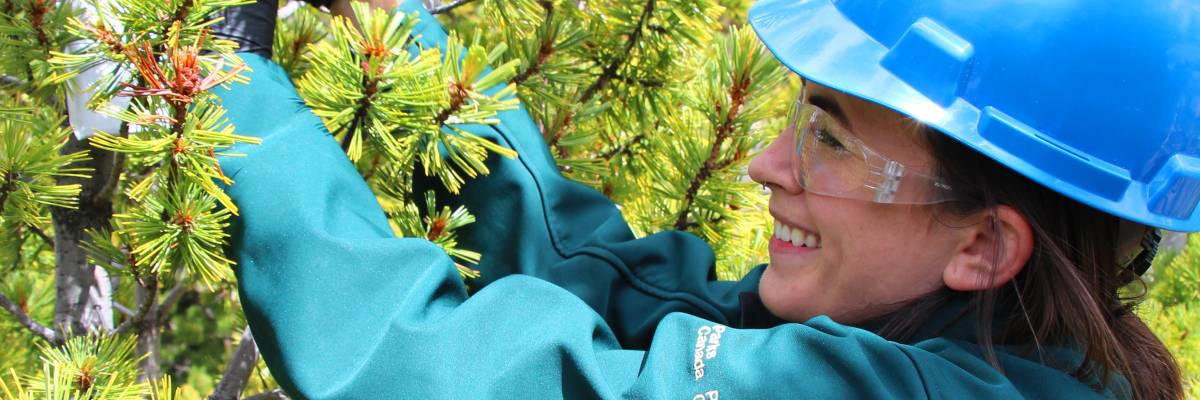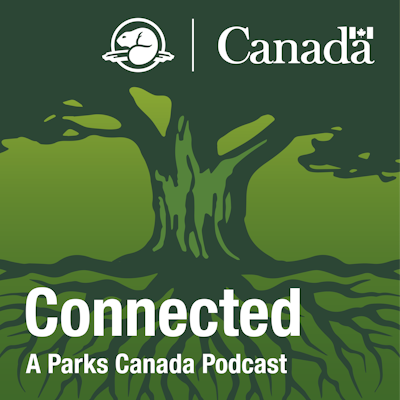
Whitebark pine
Yoho National Park
Quick facts
Needles in bunches of five
Grows at or near treeline
Cones are dark purple, 5-8 cm long
Lives up to 1000 years
SARA status: Endangered (2012)
Whitebark pine are keystone species in mountain ecosystems. They provide habitat for wildlife, stabilize slopes, and regulate snowmelt. The trees also produce large, nutritious seeds that are an important food source for bears, squirrels, and birds.
Whitebark pinecones do not open on their own, so they need help spreading their seeds. Clark’s nutcrackers have specialized beaks to crack open the cones and extract seeds. The birds carry seeds in a pouch under their tongue, fly to other locations, and store seeds in the ground for later use. Forgotten seeds will grow into new whitebark pine seedlings.
Connected: A Parks Canada Podcast New
All animals and plants are protected inside the national parks, but some need extra help. Connected will introduce you to species at risk that are in danger of disappearing.
Whitebark pine grow on mountain tops and support other plants and animals in surprising ways. Will they continue this legacy, or be killed by a widespread fungal disease? Join the conversation in Episode 5: Whitebark Pine (14:31) with five-needle pine experts Allison Fisher and Charlie McLellan. Find ways to listen for free below.
Where they live
Whitebark pine grows at or near treeline. These tough trees stand their ground against strong winds, cold temperatures, and heavy snows.
In Yoho National Park, several hiking trails lead to high elevations where whitebark pine is found. For example: Hamilton Lake Trail, Paget Lookout, Emerald Triangle, and the Iceline.

Why they are at risk
White pine blister rust
This disease is the deadliest threat facing whitebark pine trees. Fungal spores enter through the needles, spread into the branches and main trunk, and disrupt the flow of nutrients. One sign of infection is orange "blisters" on the bark. Because the fungus was introduced from Europe, the trees here did not evolve with it. Less than 1% of whitebark pine are naturally resistant.
Fire suppression
Historically, forests burned more often but most fires were small and low intensity. They created open, sunny spaces and good growing conditions for whitebark pine. Past practices of extinguishing wildfires changed this. Many forests are now dense and shady. They provide poor habitat for whitebark pine and fuel large, high-intensity fires.
Climate change
A warming climate and extreme weather events affect mountain ecosystems in many ways. For example, natural disturbances like fire and drought are becoming more severe. Also, tree species typically found at lower elevations are moving higher and competing with whitebark pine.
Mountain pine beetle
Beetles are a normal part of healthy forests in western Canada. A warming climate and fire suppression changed this. Beetle infestations now get bigger and spread to higher elevations. As a result, whitebark pine trees are attacked more frequently than in the past.
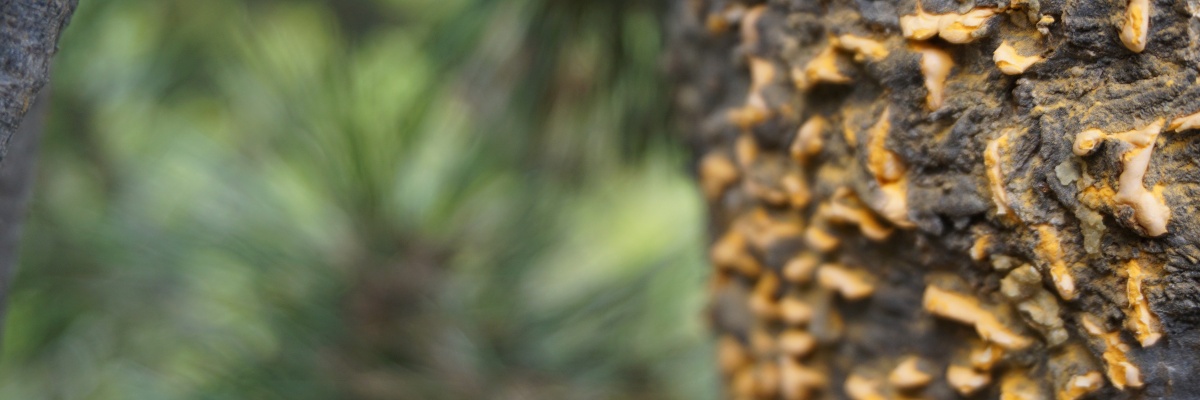

How Parks Canada is helping
Cone collecting and planting
Staff identify trees that show natural resistance to white pine blister rust, then put protective cages over the cones. When the cones are mature, they are collected. Extracted seeds are saved in a seed bank or sent to nurseries. The nurseries grow seedlings that are planted back in Yoho National Park.

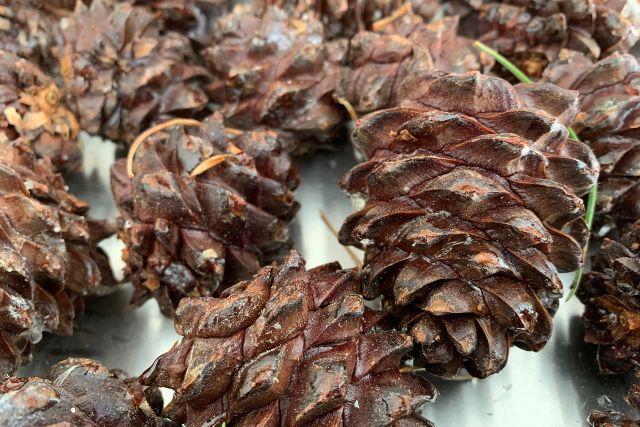
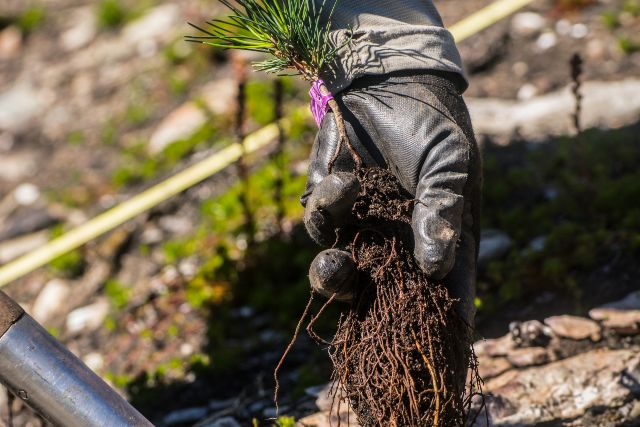
Blister rust monitoring
There are 11 long-term whitebark pine monitoring transects in Kootenay National Park. They are surveyed every five years to see how blister rust infections are changing. Additionally, staff check plus trees (trees that show natural resistance to blister rust), to see if they are staying healthy.
Fire management
Fire has many benefits for whitebark pine, like removing other trees that compete for resources and creating openings that attract Clark’s nutcrackers. Parks Canada uses prescribed fire and wildfire management to return fire to the landscape, and mechanical thinning to create space in areas where burning isn’t safe.
Pheromone protection
Pheromones are chemicals that animals use to communicate. Parks Canada uses a natural chemical called verbenone to communicate with mountain pine beetles. When small packets of verbenone are attached to high-value whitebark pines trees, they tell beetles, “move along, this tree is already occupied!”
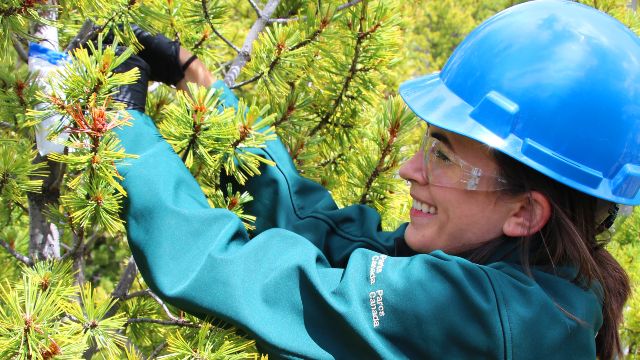
How you can help
Parks Canada uses citizen science data from iNaturalist to understand where whitebark pine grow, and which trees are infected by white pine blister rust. You can contribute to this research! Download the iNaturalist app and create an account. Learn to identify whitebark pine and the signs of blister rust. Then, record your observations on your next hike in the mountains.
But always remember to be careful: Don’t injure or remove any parts of the tree!

Learn more
Seven national parks are working together to save whitebark pine: Yoho, Kootenay, Jasper, Banff, Waterton Lakes, Mount Revelstoke and Glacier.
Planting the Future: Saving whitebark and limber pine
Species at Risk Public Registry – COSEWIC Assessment and Status Report – Whitebark pine
- Date modified :

